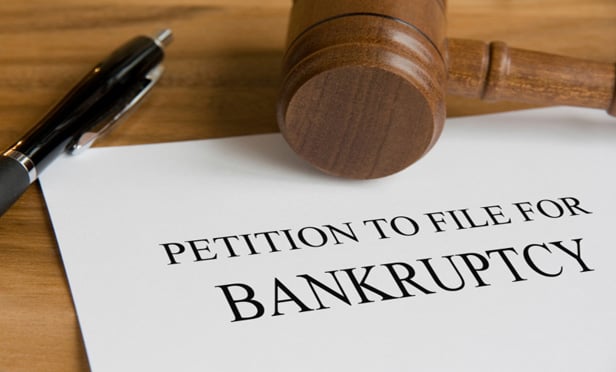Columns & Departments

Landlord & Tenant Law
Notice Sufficient In Action to Eject Occupant Lease's Taking Clause Excuses Tenant from Payment of Rent<br Village's ETPA Resolution Upheld Landlord's Delay In Providing Itemized Statement Precludes Landlord from Retaining Any Portion of Security Deposit Assignee Liable for Breach of Lease Constructive Eviction and Warranty of Habitability Defenses Rejected
Features

Idaho District Court Imposes First-Ever Bond Order Under the State's Bad Faith Assertions of Patent Infringement Act
The Act is intended to guard against patent trolling and creates a private cause of action for those targeted by bad faith infringement assertions and contemplates two types of relief: remedies and a bond requirement.
Columns & Departments

Real Property Law
Tenants In Common Failed to Establish Claim of Right Element of Adverse Possession Claim Questions of Fact About Adverse Possession Claim
Features

Do Post-Bankruptcy Petition Lease Claims Automatically Result In An Administrative Expense Claim for Unpaid Rent?
In In re Jughandle Brewing, a NJ Bankruptcy Court concluded allowance of an administrative expense claim is not automatic and also may not be the sole remedy for a debtor or trustee's failure to perform its post-petition obligations under a commercial lease.
Columns & Departments

Fresh Filings
Notable recent court filings in entertainment law.
Columns & Departments

Development
Challenge to Site Plan Approval Dismissed for Failure to Exhaust Administrative Remedies Area Variance Upheld
Columns & Departments

IP News
Are Affiliates Liable for Monetary Relief When They Are Not Named Parties to a Case?
Features

Heavy Uptick In Ch. 11 Cases Leads Surge In Bankruptcy Filings In First Half of 2024
Consumer and commercial bankruptcy filings have surged in the first six months of 2024 compared with the same period in 2023, a study said.
Features

LJN Quarterly Update: 2024 Q2
The LJN Quarterly Update highlights some of the articles from the nine LJN Newsletters titles over the quarter. Articles include in-depth analysis and insights from lawyers and other practice area experts.
Features

First Circuit Defines 'Featured Artist' for Purpose of Right to Sound-Recording Royalties from Digital Transmissions
To the public, a band typically is defined as its performing members, not a business entity that may control the music group. But when it comes to royalty rights, are the performers or the business entity entitled to "featured artist" statutory royalties from digital transmissions of the band's sound recordings?
Need Help?
- Prefer an IP authenticated environment? Request a transition or call 800-756-8993.
- Need other assistance? email Customer Service or call 1-877-256-2472.
MOST POPULAR STORIES
- The 'Sophisticated Insured' DefenseA majority of courts consider the <i>contra proferentem</i> doctrine to be a pillar of insurance law. The doctrine requires ambiguous terms in an insurance policy to be construed against the insurer and in favor of coverage for the insured. A prominent rationale behind the doctrine is that insurance policies are usually standard-form contracts drafted entirely by insurers.Read More ›
- A Lawyer's System for Active ReadingActive reading comprises many daily tasks lawyers engage in, including highlighting, annotating, note taking, comparing and searching texts. It demands more than flipping or turning pages.Read More ›
- The Brave New World of Cybersecurity Due Diligence in Mergers and Acquisitions: Pitfalls and OpportunitiesLike poorly-behaved school children, new technologies and intellectual property (IP) are increasingly disrupting the M&A establishment. Cybersecurity has become the latest disruptive newcomer to the M&A party.Read More ›
- Abandoned and Unused Cables: A Hidden Liability Under the 2002 National Electric CodeIn an effort to minimize the release of toxic gasses from cables in the event of fire, the 2002 version of the National Electric Code ("NEC"), promulgated by the National Fire Protection Association, sets forth new guidelines requiring that abandoned cables must be removed from buildings unless they are located in metal raceways or tagged "For Future Use." While the NEC is not, in itself, binding law, most jurisdictions in the United States adopt the NEC by reference in their state or local building and fire codes. Thus, noncompliance with the recent NEC guidelines will likely mean that a building is in violation of a building or fire code. If so, the building owner may also be in breach of agreements with tenants and lenders and may be jeopardizing its fire insurance coverage. Even in jurisdictions where the 2002 NEC has not been adopted, it may be argued that the guidelines represent the standard of reasonable care and could result in tort liability for the landlord if toxic gasses from abandoned cables are emitted in a fire. With these potential liabilities in mind, this article discusses: 1) how to address the abandoned wires and cables currently located within the risers, ceilings and other areas of properties, and 2) additional considerations in the placement and removal of telecommunications cables going forward.Read More ›
- Guidance on Distributions As 'Disbursements' and U.S. Trustee FeesIn a recent case from the Bankruptcy Court for the District of Delaware, In re Paragon Offshore PLC, the bankruptcy court provided guidance on whether a post-plan effective date litigation trust's distributions constituted disbursements subject to the U.S. Trustee fee "tax."Read More ›
